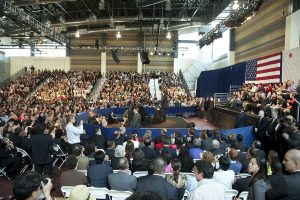
What is a town hall meeting?
In the United States, a town hall meeting is an informal public meeting, function, or event derived from the traditional town hall meetings of Colonial America. Typically open to everybody in a town community and held at the local municipal building, attendees would present ideas, voice their opinions, and ask questions of the public figures, elected officials, or political candidates. Attendees rarely voted on an issue or proposed an alternative to a situation. In the early days of America, the very idea that regular people could speak their minds and ask questions directly of their leaders was radical!
What do you hope to accomplish?
A town hall meeting is most often NOT the best way to obtain useful public input. Frequently, public officials will go straight to this technique rather than thinking through several important questions:
- What is our objective in asking for public input? What do we need to know from the public that will help us constructively move forward in making this decision?
- What will we do with the input once we get it?
- Who needs to be present? Who do we need to hear from? How many people might we expect to participate?
- How much time do we have for this engagement? What resources (staff, skills, budget) are available?
Only when these questions have been answered should you begin to consider the design of your engagement activity. Select the technique or combination of techniques that will meet these objectives.
Is there a better technique?
Here’s a quick example. Neighbors are upset about a proposed location for a sewage treatment plant. The City has agreed to consider additional sites and invited the public to help them. Rather than asking the public “where do you want this plant,” they break the larger group into smaller groups of 10 or 12 and ask each group to answer 3 questions:
- What concerns do you have about the plant’s location?
- What is most important to you about the site that will be chosen?
- How do you want to be involved as the process moves forward?
Use the Card Storming Technique to gather responses and organize them into natural groupings. Everyone will feel more included and can see their contribution contained within the larger group’s thinking. This example is much more productive for everyone than simply asking people to come to the microphone and comment on what they like or don’t like about the proposed plant locations.
Need help with techniques? Our EOP2 training is a great start!
Marty Rozelle
